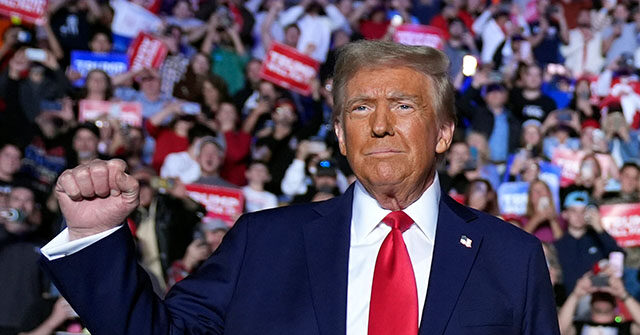On a pivotal campaign trail stop in Reading, Pennsylvania, former President Donald Trump rallied his supporters, emphasizing the state’s crucial role in the 2024 election. After losing Pennsylvania by a narrow margin of 1.2 points in the 2020 election, Trump and his Republican allies have concentrated their efforts on grassroots initiatives. These initiatives focus on registering new voters and encouraging early voting, particularly among demographics that may boost turnout for Trump. The state’s political significance cannot be overemphasized, with analysts suggesting that the outcome in Pennsylvania could strongly influence the overall result of the election.
Trump underscored the urgency of voter turnout during his rally, declaring, “If we win Pennsylvania, we win the whole ball of wax.” The former president rallied his supporters to take action, noting that they had been waiting for this moment for four years. His calls to arms were not just about winning Pennsylvania; they represented a broader theme of renewing his political agenda to “make America great again.” Trump’s determined rhetoric was aimed at motivating complacent voters, and he encouraged them to participate actively in the election process to ensure a definitive victory.
Throughout the day, Trump held multiple rallies, beginning in Raleigh, North Carolina, before concluding his campaign activities later in Grand Rapids, Michigan. His speeches were characterized by promises of a stronger and more prosperous America, a stark contrast to what he described as the “gross incompetence and failure” of the opposing party. By painting a vivid picture of contrasting futures—one that highlights his vision of economic and national security against the failures of his rivals—Trump sought to energize his base and crystallize voter motivations heading into Election Day.
As the discussions in the political arena pivoted around Pennsylvania, journalist Mark Halperin raised essential considerations regarding the race’s dynamics beyond the state. Although experts largely agree that winning Pennsylvania could be pivotal for both candidates, Halperin suggested that Vice President Kamala Harris could potentially win the state yet still lose the election if she fails to secure victories in other key states like Wisconsin. His comments highlighted the complexities of electoral strategies and the interconnectedness of state outcomes in the larger national context.
Halperin’s insights reflected the competitive landscape, especially given the reported vulnerabilities that Harris faces in crucial swing states. Drawing from multiple reliable sources, he conveyed skepticism about Harris’s chances in Wisconsin, indicating that Democrats might need to reassess their strategies if they want to secure victories in multiple battleground states. The overarching strategy necessitates focusing not solely on Pennsylvania but also on maintaining competitiveness in other states that could tilt the scales of the election away from the leading candidate.
As the race unfolded, the stakes have never been higher, with both sides ramping up their efforts to sway voters in key regions. Trump’s concluding remarks reiterated the imperative for voter mobilization and engagement, framing the election as a direct referendum on the prosperity and direction of the country. The political landscape remains volatile, and with heightened scrutiny surrounding the outcomes in states such as Pennsylvania and Wisconsin, all eyes will be on voters’ decisions as they navigate through contrasting visions laid out by the candidates. Wendell Husebo, a seasoned political reporter, captures this sentiment as he brings attention to the critical moments leading up to the election, urging followers to remain vigilant as the narrative unfolds.

